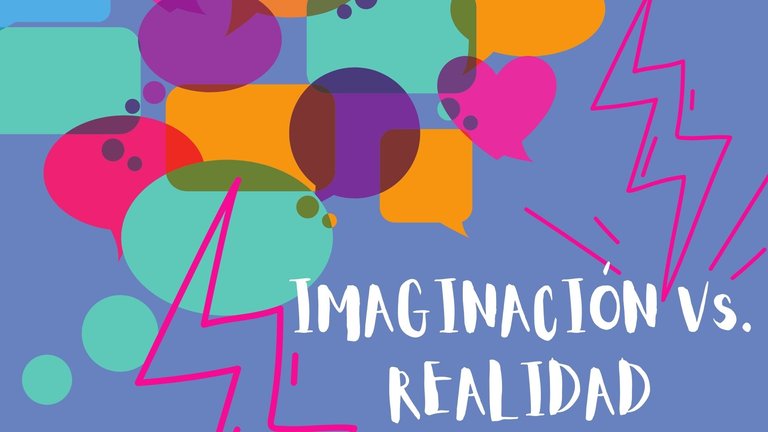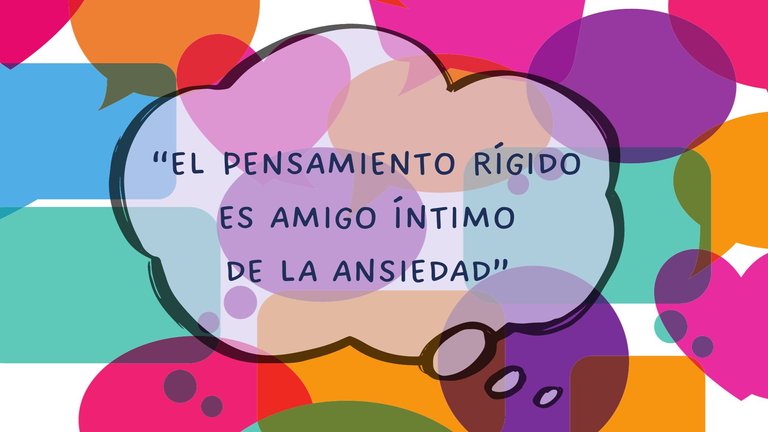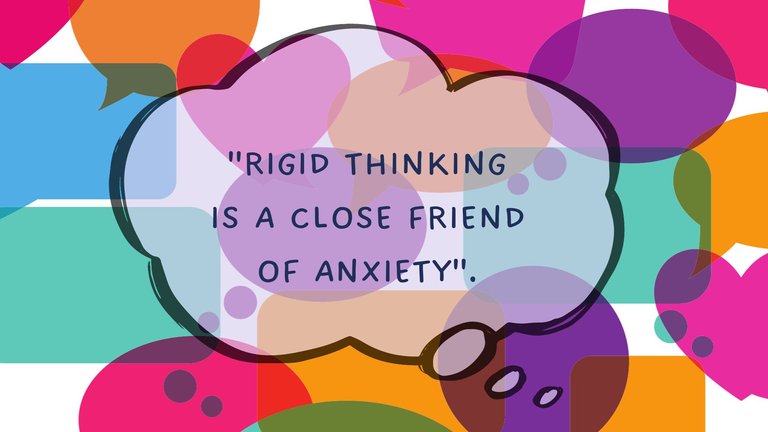Pensamientos Catastróficos ¿Cómo superarlos? 🧶🌀

La realidad no suele ser tan grave como la imaginamos
Todos los seres humanos pensamos de formas irracionales. Los errores de pensamiento no son exclusivos a un trastorno psicopatológico.
Nos descubrimos ensimismados, en medio de ideas, imágenes o discursos internos que nos hacen sentir mal, que nos llenan de angustia o miedo o que nos hacen ver la realidad de una forma distorsionada, poco realista.
Esto es lo que ocurre con la catastrofización, que es la tendencia a pensar que lo que sucederá será terrible, insoportable y que uno no será capaz de afrontarlo. Supone dedicarse a pensar en lo mal que nos sentiremos si el evento ocurre.
Imaginemos el siguiente ejemplo: una persona está próxima a tener una entrevista de trabajo en otro idioma y, pese a que domina este lenguaje muy bien, no puede dejar de pensar que se trabará a la hablar, que no sabrá como explicarse, que le pedirán que repita una y otra vez lo mismo pues no logran entenderlo y que, en últimas, una vez finalizada la entrevista, se sentirá terriblemente mal, ineficiente y culpable.
A partir de este ejemplo, miremos dos estrategias que nos ayudan a poner a prueba este tipo de pensamientos.
La primera de ellas nos permite evaluar su funcionalidad, a través de la siguiente pregunta:
¿Pensar que me va a ir mal me va a ayudar a que me vaya bien?
La segunda estrategia, implica pensar de una forma más exagerada y las posibles consecuencias de ello, por ejemplo:
¿Qué es lo peor que me puede pasar si es cierto lo que pienso?
Estas estrategias forman parte de lo que se conoce como Reestructuración Cognitiva y es una de las herramientas disponibles en Terapia Cognitivo Conductual para hacerle frente a los pensamientos irracionales.

Todos hemos llegado a pensar de formas catastróficas, y aunque sentimos alivio una vez nos hemos dado cuenta de que la situación no era tan compleja como la imaginábamos en nuestras cabezas, hacernos estas dos preguntas puede ayudar a que nos sintamos mejor, incluso, antes de haya ocurrido el evento al que tanto nos anticipamos y que nos genera angustia o ansiedad.
La vida no solo la vemos a través de nuestros ojos, sino también, a través de nuestros anteojos. Estos nos permiten interpretar las cosas que ocurren a nuestro al rededor de un modo, o de otro. Es maravilloso cuando nos damos cuenta de que nuestros anteojos son provisionales, que podemos guardarlos, sustituirlos, limpiarlos o romperlos, con el propósito de un mayor bienestar emocional. Estos anteojos están formados por nuestras creencias, experiencias de vida, prejuicios, expectativas, ideas, fantasías, miedos. Saber esto nos ayudará a ser más flexibles con respecto a lo que pensamos, y nos permitirá recibir y manejar la información a un nivel más óptimo y funcional. La idea no es pasar de un pensamiento extremadamente negativo a uno extremadamente positivo. La idea, más bien, es lograr pensar en términos realistas, objetivos. Esto lo lograremos a través de la práctica, cuestionando lo que ha sido para nosotros una certeza desde siempre y permitiéndonos incorporar modos diferentes de interpretar las situaciones.


Reality is often not as bad as we imagine it to be.
All human beings think in irrational ways. Thinking errors are not exclusive to a psychopathological disorder.
We find ourselves in a self-absorbed state, in the midst of ideas, images or inner discourses that make us feel bad, that fill us with anguish or fear, or that make us see reality in a distorted, unrealistic way.
This is what happens with catastrophising, which is the tendency to think that what will happen will be terrible, unbearable and that one will not be able to cope with it. It involves thinking about how bad we will feel if the event happens.
Let's imagine the following example: a person is about to have a job interview in another language and, although he/she masters this language very well, he/she cannot help thinking that he/she will get stuck when speaking, that he/she will not know how to explain him/herself, that he/she will be asked to repeat the same thing over and over again because he/she cannot understand him/her and that, ultimately, once the interview is over, he/she will feel terrible, inefficient and guilty.
From this example, let's look at two strategies that help us to test this kind of thinking.
The first one allows us to assess their functionality, through the following question:
Will thinking that I am going to do badly help me to do well?
The second strategy involves thinking in a more exaggerated way and the possible consequences of this, for example:
What is the worst thing that can happen to me if what I think is true?
These strategies are part of what is known as Cognitive Restructuring and is one of the tools available in Cognitive Behavioural Therapy for dealing with irrational thoughts.

We have all come to think in catastrophic ways, and although we feel relief once we realise that the situation was not as complex as we imagined it in our heads, asking ourselves these two questions can help us feel better, even before the event that we anticipate so much and that causes us distress or anxiety has occurred.
We see life not only through our eyes, but also through our glasses. These allow us to interpret the things that happen around us in one way or another. It is wonderful when we realise that our glasses are temporary, that we can keep them, replace them, clean them or break them, for the purpose of greater emotional well-being. These glasses are formed by our beliefs, life experiences, prejudices, expectations, ideas, fantasies, fears. Knowing this will help us to be more flexible about what we think, and allow us to receive and handle information at a more optimal and functional level. The idea is not to move from extremely negative to extremely positive thinking. The idea, rather, is to manage to think in realistic, objective terms. We will achieve this through practice, by questioning what has always been a certainty for us and allowing us to incorporate different ways of interpreting situations.
Todas las imágenes de esta publicación son de mi autoría, editadas en snapseed y canva. El contenido también es original y propio.
All images in this post are my own, edited in snapseed & canva. The content is also original and mine.
Saludos amiga @sofiaquino98. Gracias por compartir un post de mi interés, "Pensamientos catastróficos ¿cómo superarlos?".
Me haces recordar cuando fui a mi primera entrevista de trabajo en la industria petrolera y sabiendo que tenía las competencias para conseguir mi trabajo, mi cabeza se llenó de pensamientos catastróficos imaginando lo peor que podía hacer en la entrevista.
Gracias a Dios me fue muy bien y no como me estaba imaginando.
Dios bendiga tu vida y a tu familia. Todo lo mejor para ti.
Te invito a participar en la Iniciativa promovida por la amiga @charjaim, en la que estoy seguro, nos aportarás tus cuatro valiosas estrategias sobre bienestar. Te comparto el link:
https://hive.blog/hive-131951/@charjaim/esa-vida-nuestra-iniciativa-19
Hola! Gracias por compartirnos su experiencia, es algo que ocurre con mayor frecuencia en situaciones de estrés.
Claro que sí, leeré sobre la iniciativa para participar. Mil gracias y los mismos deseos para usted! 🤗